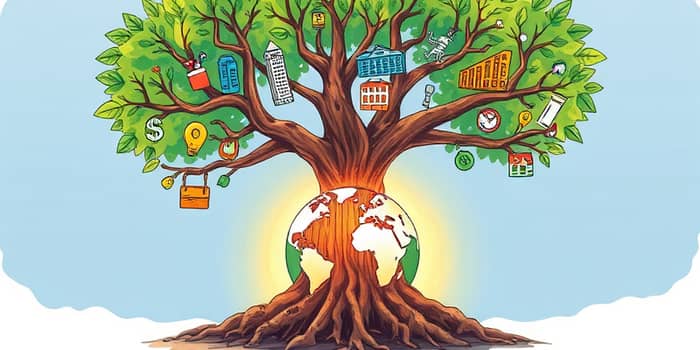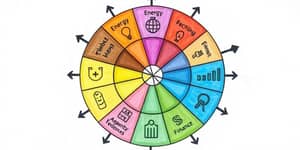
In an era of unpredictable markets and global uncertainty, investors often face the temptation to chase the highest returns. Yet history teaches us that a well-structured portfolio thrives not by chasing peaks but by weathering storms.
Maintaining consistent growth over decades starts with understanding the true nature of diversification.
Diversification is more than owning a handful of stocks. It involves spreading investments across various financial instruments, industries, and geographies to mitigate risk.
By combining asset classes—stocks, bonds, real estate, and alternatives—investors build a cushion that reduces downside risk and cushioning against market downturns.
The power of diversification is best understood through empirical data. Consider an initial $100,000 investment allocated across multiple asset categories versus the same sum fully invested in the S&P 500:
Over rolling 10-year windows from 1976 to 2016, broadly diversified portfolios frequently achieved superior Sharpe ratios compared to all-equity holdings. Even during turbulent years like 2022, diversified holdings outperformed concentrated equity positions, demonstrating their shock-absorbing capacity.
Investors like Carnegie and Buffett emphasize balanced diversification over indiscriminate spread. The goal is not to own every asset but to blend those whose returns move independently.
Modern portfolios increasingly incorporate private equity, commodities, real estate, and ESG-focused strategies. Private equity represents over 10% of the global equity market, offering exposure unavailable in public markets. Adding this layer can enhance long-term risk-adjusted returns and further diversify the equity sleeve.
Similarly, ESG integration has grown into a core diversification tool. By screening for environmental, social, and governance factors, investors tap into companies positioned for sustainable growth while mitigating long-term regulatory and reputational risks.
Getting started requires clarity on goals, risk tolerance, and time horizon. Consider these action points:
1. Define target allocations: Decide on stocks, bonds, real estate, and alternatives percentages based on your profile.
2. Rebalance regularly: Realign to original weights to capture gains and avoid unintended risk drift.
3. Vet new opportunities: Assess correlation, liquidity, and expected return before adding emerging asset classes.
During 2022’s steep equity drawdown, investors with a diversified asset base fared markedly better. While the S&P 500 sank over 20%, a hypothetical portfolio of 40% equities, 40% fixed income, 10% real estate, and 10% commodities limited losses to under 10%.
This outcome illustrates how diversification acts as an insurance policy, sacrificing some upside during bull runs but preserving wealth in downturns.
Efforts to chase outsized gains through concentrated bets may occasionally pay off, but consistency and peace of mind stem from broad-based diversification. By combining asset classes, geographies, and emerging market exposures, investors build portfolios resilient to shocks and poised for sustainable growth.
Remember, diversification is not a one-time step but an ongoing discipline. Commit to regular reviews, thoughtful rebalancing, and an openness to new opportunities. In doing so, you harness the enduring power of diversification to secure your financial future.
References













